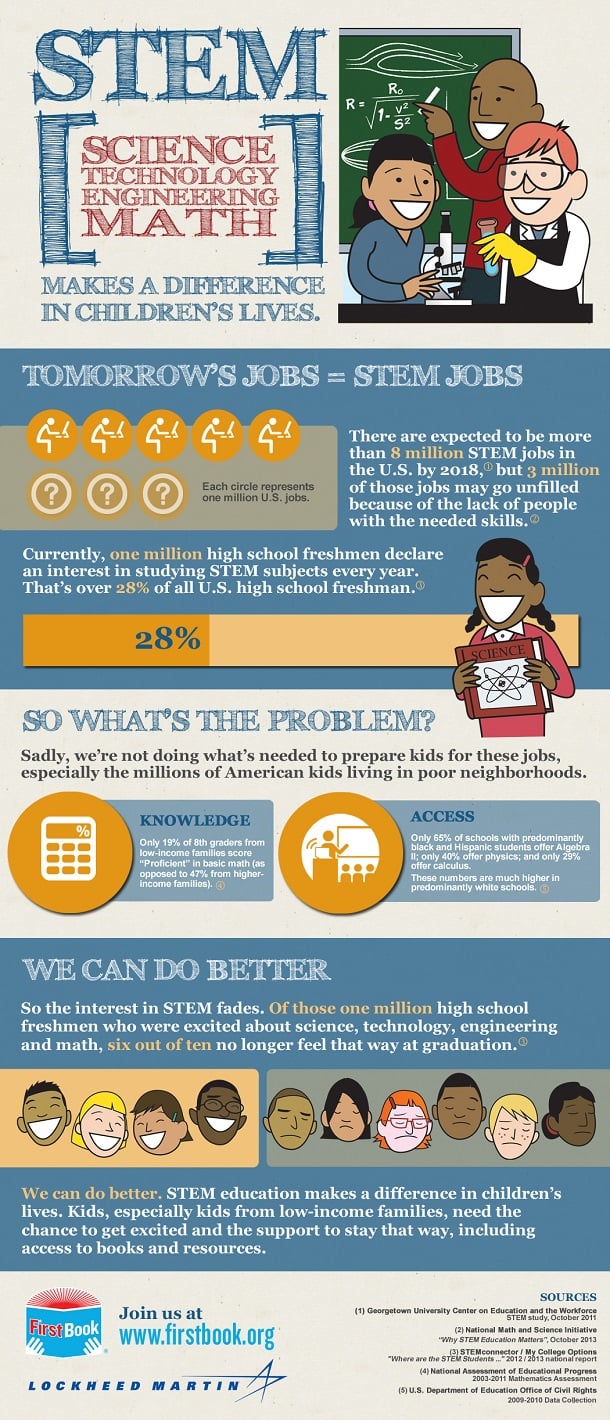Here is some interesting information on the future of STEM learning I found in a cool graphic illustration by First Book, a nonprofit social enterprise, that seems to indicate this country is heading for trouble in a few years, trouble brought about by our losing our edge as the world’s most technologically advanced nation.
It is expected that By 2018 there will be at least 8 million jobs in the US dependent on skills learned in STEM learning courses. Problem is, experts estimate that at least 3 million of those jobs will have to go to applicants from outside the US due to a shortage of qualified people here. Worse, the companies needing those workers might take the jobs elsewhere.
Why don’t we have enough qualified applicants in this country to supply our own employment need? We certainly have enough kids in school. In fact, each year over 1 million freshman high school students claim to be interested in a career requiring STEM skills. Unfortunately 60%--six out of ten--change their minds before graduation.
This problem is particularly acute amidst minority and poorer populations. That may be because of a lack of math and science courses in their high schools. Only 65% of predominantly black or Hispanic high schools have Algebra 2 courses. Only 19% have calculus courses. Poor neighborhoods display similar discrepancies with only 27% of students testing “proficient” in math. The problem begins early in poorer communities where as early as the 4th grade 33% show a negative attitude toward math.
So what does this tell us? You guessed it! We need to further the spread of STEM learning courses in every part of this country, particularly in areas with many poor and minority students. The choice is stark, prepare for national technological irrelevance. Leave the new space race to the Chinese and the Indians or produce more STEM skilled workers by engaging students in STEM using robots.


